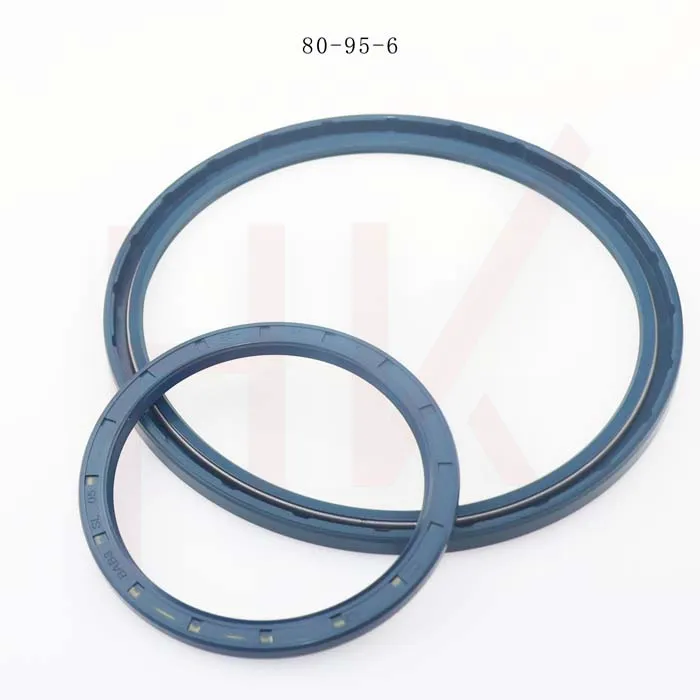9 月 . 02, 2024 03:20 Back to list
Hydraulic Seal Replacement Services - Expert Solutions for Your Machinery
Hydraulic Seal Replacement A Comprehensive Guide
Hydraulic systems are integral to various industrial applications, from construction equipment to manufacturing machinery. Among the critical components of these systems are hydraulic seals, which are designed to prevent fluid leakage and maintain the integrity of hydraulic pressure. Over time, seals may wear out due to various factors such as heat, pressure, contamination, and friction. When this happens, it’s essential to conduct a hydraulic seal replacement to ensure the system operates efficiently. This article provides a comprehensive guide on the process of replacing hydraulic seals.
Importance of Hydraulic Seals
Hydraulic seals serve multiple functions, including preventing hydraulic fluid from escaping and keeping contaminants out of the system. A faulty seal can lead to significant issues, including fluid leakage, reduced system efficiency, and potential damage to other components. Regular inspection and timely replacement of these seals can prevent costly repairs and downtime, ensuring optimal performance of hydraulic systems.
Signs of Seal Failure
Before proceeding with a seal replacement, it's crucial to identify the signs of seal failure. Common indicators include
1. Fluid Leaks Visible leaks around the seal area are the most apparent signs of failure. 2. Decreased Performance If machinery is operating less efficiently or struggling under load, the seals might be compromised. 3. Increased Heat Overheating can point towards inadequate lubrication, often due to failing seals. 4. Unusual Noise Grinding or squeaking noises may indicate that seals are worn or damaged, affecting the system's operation.
Steps for Hydraulic Seal Replacement
1. Preparation Before beginning the replacement process, ensure you have the necessary tools and replacement seals ready. This typically includes wrenches, screwdrivers, seal pullers, and lubricants.
hydraulic seal replacement

2. Depressurization Always ensure the hydraulic system is completely depressurized before attempting any repairs. This is critical for safety and to prevent further system damage.
3. Disassembly Carefully disassemble the hydraulic components that house the seals. Take note of the assembly order and the location of each component to facilitate reassembly.
4. Remove Old Seals Use a seal puller to gently remove the old seals. Be cautious not to scratch or damage the housing, as this can compromise the effectiveness of the new seals.
5. Clean the Area Thoroughly clean the seal grooves and surrounding areas to remove debris and residue. A clean working environment is vital for the proper installation of new seals.
6. Install New Seals Apply a thin layer of lubricant to the new seals and carefully place them into their respective grooves. Ensure they are seated properly and evenly to avoid leaks.
7. Reassembly Reassemble the hydraulic components in the reverse order of disassembly. Tighten bolts and screws to the manufacturer’s specifications to ensure a secure fit.
8. Testing Once reassembled, gradually pressurize the system and check for any signs of leaks. Monitor the system's performance to ensure the seals are functioning correctly.
Conclusion
Replacing hydraulic seals is a crucial maintenance task that can significantly impact the performance and longevity of hydraulic systems. By proactively monitoring for signs of failure and conducting timely replacements, operators can minimize downtime and enhance operational efficiency. If uncertain about the replacement process, consulting with a knowledgeable technician can ensure that the job is done correctly and safely.
-
The Power of Advanced Sealing: High-Pressure Solutions for Modern Machinery
NewsOct.29,2024
-
Optimizing Machinery with High-Performance Oil Seals
NewsOct.29,2024
-
Maximizing Machinery Efficiency with Advanced Oil Seals
NewsOct.29,2024
-
Ensuring Equipment Longevity with Quality Oil Seals
NewsOct.29,2024
-
Enhance Equipment Performance with Quality Oil Seals
NewsOct.29,2024
-
Custom Oil Seals for Specialized Machinery Needs
NewsOct.29,2024
-
The Role of Wiper Seals in Dust Sealing and Oil Protection
NewsOct.20,2024
Products categories
















